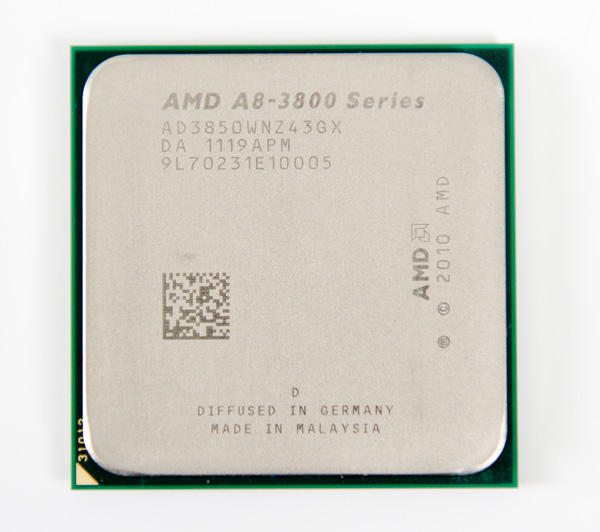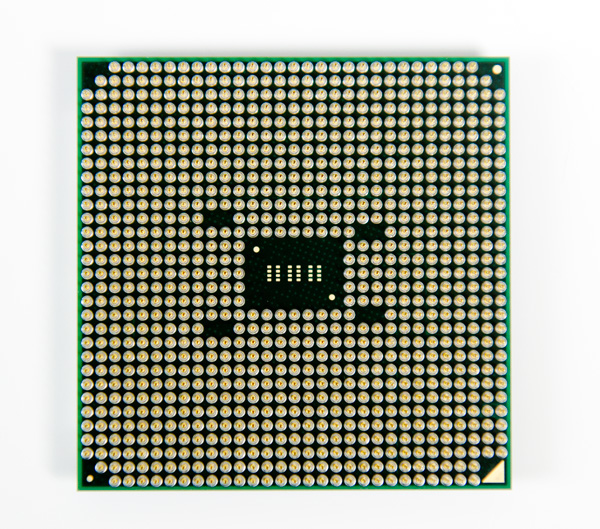The Llano Desktop Preview: AMD A8-3850 CPU & GPU Performance
by Anand Lal Shimpi on June 14, 2011 12:00 AM ESTFinal Words
There are still a number of unanswered questions about Llano on the desktop. In the coming weeks we'll be looking at HTPC performance, power consumption, and hopefully we'll be able to figure out what the deal is with overclocking AMD's new mainstream APUs.
The question of processor graphics performance is open and closed. Llano offers what I'd expect to be the bare minimum from any processor offering a real performance oriented GPU. All of our bench suite is playable on Llano and its actually possible to drive up image quality settings without sacrificing playability. If you're looking to build an entry-level gaming PC, Llano is most likely going to be on your hit list this year.
It took AMD spending half the transistors of Llano on its GPU to deliver the sort of performance we've been asking for from integrated graphics for over a decade; the question I have is whether or not Intel is willing to make a similar sort of move in its architectures.
Ivy Bridge has already been decided upon; it'll be faster but not a significant upheaval in performance. However Intel does have a history of building upon ideas that AMD introduced before their time (e.g. IMC, x86-64, Fusion), and with Llano we may be given a peek at what's to come in the future.












131 Comments
View All Comments
Akv - Tuesday, June 14, 2011 - link
What is called "serious gamerz" is 0.01% of users, but 99.99% of review websites visitors.Hence the eerie tone of most articles like "so can it do gaming or not" totally out of context when price, consumption, heat, technical elegance should be the matter.
The fact that an IGP that can do perfect bluray, perfect architectural or medical simulation, perfect graphic editing can be labeled "insufficient for serious users" is itself a subject of philosophical wonder, especially when you realize that what the "serious users" do is shooting at ridiculous zombies in extremely ugly environments.
jabber - Tuesday, June 14, 2011 - link
Spot on!I think the issue is that AMD is listening and looking at what 99% of real world users actually use and need and catering to that.
Intel on the other hand have been totally blinded to follow the rants and needs of the 0.01% that read the review sites and their prices/power levels have gone up accordingly.
Its really only AMD's stubborn and baffling refusal to advertise to the masses that they obviously covet so much that holds them back.
Get enough TV ads up there and folks will be just as happy to ask for an AMD chip as an Intel especially when they find the AMD box is $100 cheaper.
If you dont advertise then its your own fault that you arent selling as much as the guy that does.
Exodite - Tuesday, June 14, 2011 - link
Given that both Intel's and AMD's IGP solutions are currently good enough for everything up to mainstream gaming I can't really see why AMD are doing a better job?Llano is obviously not fast enough to allow more serious work and the weaker per-core performance is going to be a drawback for most mainstream users who do browsing and word processing as their main tasks.
Llano seems to be lacking a significantly improved memory and cache system to truly make it shine, at least as far as GPU performance with 400 SPs go.
veri745 - Tuesday, June 14, 2011 - link
Are you serious? I can browse and do word processing on my ancient P4. Per-core performance doesn't matter for what the *vast* majority of users do on their computers. What kind of "serious work" requires something beefier than an Athlon II X4?And think a minute before you say "video encoding/transcoding", because soo few people actually do that, and those that do know what they need.
norwayishot - Tuesday, June 14, 2011 - link
Gotta agree with 'veri745', mainstream users will not notice the performance difference.A 5 year old processor is just fine for your average PC user.
jabber - Tuesday, June 14, 2011 - link
Yeah I've always felt that as soon as CPUs reached dual core to stop the eggtimer appearing with more then two windows open, that was it.The "need for more power game" ended for most folks at that point.
Customers just dont give a damn about CPUs on modern PCs. The thing that really wows them is show the the difference between a mechanical HDD and a SSD.
Now that they notice.
Seikent - Tuesday, June 14, 2011 - link
I think that an upgrade from an old pc (P4 for example) does have a noticeable impact on web browsing, text processors and so on, because these program are hungrier than before, but when you get certain amount of power, the bottleneck goes to the hard drive. So if you're browsing using a SB or a llano cpu, it wouldn't matter very much.jabber - Tuesday, June 14, 2011 - link
Good folks at Anandtech, is there any chance one of you could get an interview with the Marketing Dept Head at AMD and ask them exactly what is their strategy for getting into the hearts and minds of the general computing public?The dont seem to be bothering thats all.
nickb64 - Tuesday, June 14, 2011 - link
I would guess they don't bother a whole lot because most people don't know or give a shit what the difference between Intel and AMD is. I know my mom and my sister don't. All they really care about is whether their computer can be used for email, browsing, and maybe occasional light photo/video editing with something like Windows Movie Maker or Photoshop Elements.jabber - Tuesday, June 14, 2011 - link
No thats note quite my point. As you say if mum and dad dont care but they only know of Intel due to them appearing on TV adverts 5 times a night which one will they go for?The Intel, cos they've never heard of AMD. You wouldnt buy a car and many other goods from a company you never heard of.
But you only have to get slight recognition and folks will be okay with it.
If you dont try you'll never know.